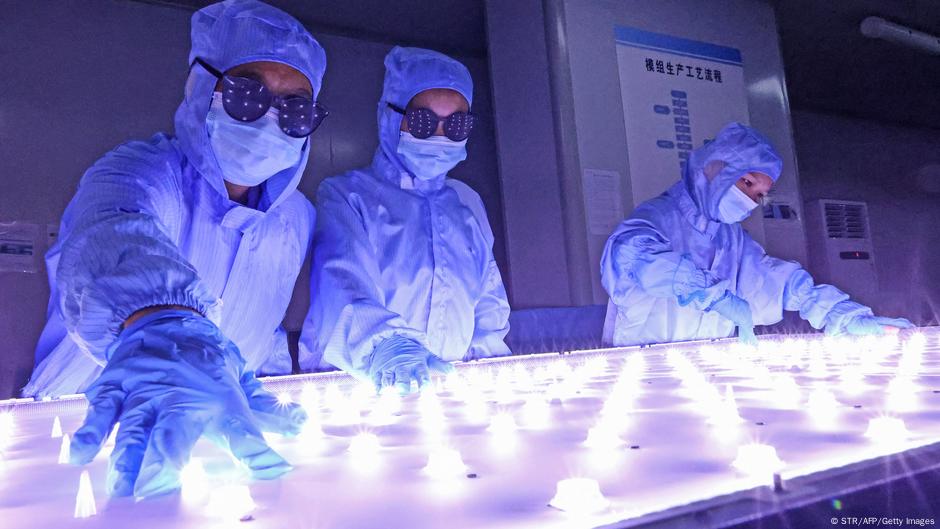China’s Ascendancy in Global Science
“Scientia potestas est — Knowledge is power!” This phrase, coined by English philosopher Sir Francis Bacon at the end of the 16th century, underscores the strategic value of knowledge. Today, this motto remains relevant as the global research landscape undergoes a significant transformation.
A recent study published in the “Proceedings of the National Academy of Sciences” (PNAS) reveals that Chinese scientists have taken the lead in nearly half of all collaborations with US colleagues in 2023. This milestone highlights Beijing’s growing influence and its ability to shape the research agenda on key international issues.
China’s Leading Role: A Shift in Power
China’s rise in scientific prominence is not measured solely by traditional metrics like Nobel Prizes or publication counts. An analysis of six million research papers shows that 45% of leadership positions in US-Chinese joint studies were held by Chinese researchers in 2023, up from 30% in 2010. If this trend continues, China is expected to achieve parity with the US in strategic areas such as artificial intelligence, semiconductor research, and materials science by 2027-2028.
In terms of scientific publications, China has surpassed the US in several indices. The latest G20 Research and Innovation Report indicates that nearly 900,000 scientific publications originate from China, a threefold increase since 2015. In the Nature Index, which evaluates the top 150 medical and natural science periodicals, China has long overtaken the US. Among the ten leading institutions evaluated by the Nature Index, seven are Chinese.
Strategy, Investment, and Networking: China’s Path to Success
China’s rapid ascent in research is driven by significant investment and a strategic focus on science as a core component of its development plan. The country has opened its research to international collaboration and actively facilitates these partnerships. Chinese students and scientists are encouraged to work globally, fostering a network for increased international cooperation.
Through technology industries and the Belt and Road Initiative (BRI), billions of dollars in investments are directed toward attracting talent to China and building global connections. According to the PNAS study, science diplomacy is used as a deliberate tool to enhance China’s position in the global research arena.
Central Management vs. Creativity: Strengths and Weaknesses
China’s strengths include speed, strategic investment, and centrally controlled networks. These factors contribute to outstanding results in engineering, electronics, materials science, physics, and chemistry. However, strict central control also presents challenges. In many research areas, China lacks groundbreaking innovations and the independence needed for creative breakthroughs.
The US, with its decentralized and company-driven culture of innovation, still holds an advantage over China and Europe in certain fields. Additionally, international research collaboration is becoming more challenging due to geopolitical tensions between the US, Europe, and China.
The AI Race: China Catches Up
While the US currently leads in artificial intelligence (AI), China is rapidly catching up. The Deepseek language model exemplifies how quickly and affordably Chinese technologies can enter the market. Although Harvard remains a leader in AI innovation, Chinese academies are making significant strides.
China dominates in AI patent applications, with the US maintaining a strong position but often lagging behind European institutions in global comparisons.
Western Systems in Crisis: Why the US and EU Are Lagging
China’s rise coincides with a period of weakness in the US and Europe. The US research landscape faces political instability, budget cuts, and a loss of top talent. Policies under former President Donald Trump and the strained relationship between the US and China have led to a decline in joint projects and a shift of talent toward China.
Europe may benefit from top talent leaving the US, but it faces its own challenges. Many areas of science in Europe suffer from a backlog, and national sensitivities often hinder progress within the EU and across the continent.
Global Fallout: Shifting Power Dynamics
China’s dominance is reshaping the global economic and geopolitical order. As China organizes parts of the international research agenda, Europe risks falling further behind in the race for future technologies.
Collaboration with Chinese teams could be a way for Europe to keep up. However, it remains uncertain how the Chinese system will respond to the increasing fragmentation of the scientific landscape and rising geopolitical tensions.
Europe’s Opportunity: Embracing Diversity
A potential alternative to fragmentation is a purposeful setup of a European force beyond national interests. Europe’s diversity in languages, cultures, and traditions is not a weakness but a strength. This diversity can drive innovation, something that monolithic countries may lack.
The European Research Area (ERA) monitoring report suggests that if Europe cooperates effectively and pools its resources, it can become a scientific powerhouse capable of competing with China and the US on equal footing.
